Looking to get a Yamaha TTR 125 but not sure if it's a good bike for you? Whether you're looking for your first dirt bike or your next one, you're in the right place!
In this review, I'll show you what kind of dirt bike the TTR125 is, the differences between the model options, why it may or may not be good for you, and what you need to know about buying and owning one so that you save time and money by making the best decision!
What Is The TTR125?
The Yamaha TTR125 is a 125cc air-cooled 4 stroke trail dirt bike with a 5 speed transmission and clutch. It was first made in 2000 and was built to rival the Honda XR100 as a midsize beginner dirt bike. Although now it rivals the updated CRF125F.
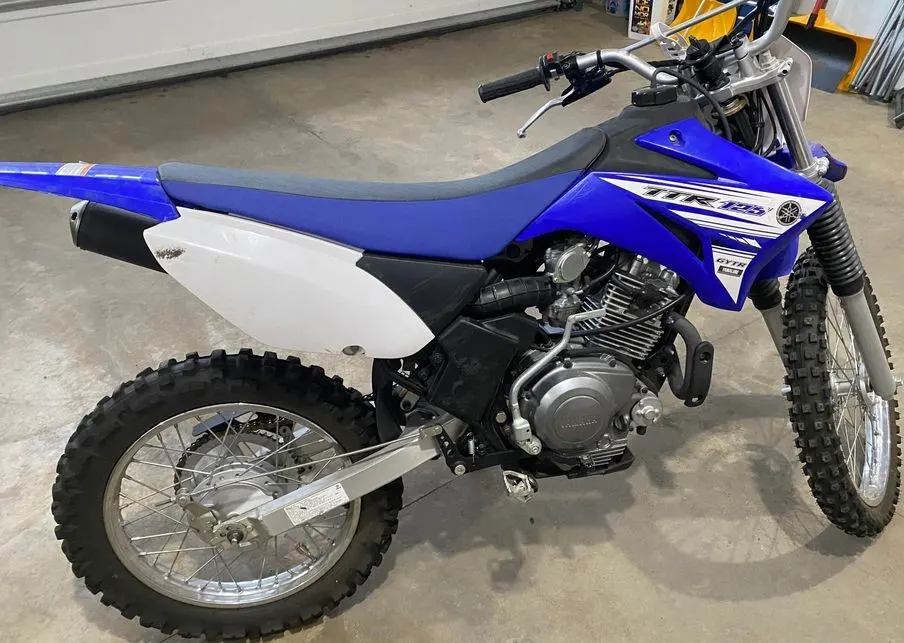
Who's the TTR 125 for - what age range?
It's mainly designed for teens around the age of 12-13, but it's great for any adult or teenager new to riding that's under 5'6" in height.
What makes a great beginner bike? The Yamaha TTR125 has long been known as a stepping stone dirt bike for kids and adults alike that are looking for a simple, easy to ride and maintain off-road motorcycle with a lower seat height.
If you're brand new to dirt biking then I'd like to show you how to confidently ride a dirt bike with safe and proper riding techniques with my Free training guide.
Is there a weight limit?
There's not technical weight limit, but the TTR 125 is designed for riders in the 80-120 pounds range of weight. If you weigh over 150lbs, then you'll probably want stiffer suspension.
It's not good for jumping, especially if you're an adult. The stock forks and shock will easily bottom out and can eventually break the frame if you jump it too much without proper mods.
Difference Between TTR & YZ 125
A TTR 125 is a 4 stroke beginner trail bike with a short seat height, soft suspension, and a low performance engine. A YZ 125 is 2 stroke motocross bike with a tall seat height, stiffer suspension, and a high performance engine. They're two totally different types of dirt bikes.
So, a TTR 125 is better if you're a new rider under 5'6" tall and want to learn how to ride a dirt bike or just casually ride off-road. A YZ 125 is better if you are a more experienced rider and want a full size 2 stroke motocross bike to race on ride on tracks.
Engine/Power expectations
One of the biggest mistakes you can make when choosing the right dirt bike for a beginner is starting out on one that has too much power. You will either be scared of it you'll be on the ground sooner or later and wondering what just happened.
It takes time to learn throttle and clutch control, and started out on a docile bike that has a smooth and manageable power output is ideal for a first motorcycle.
The TTR125LE fits this description perfectly because it's a simple, air-cooled 125cc engine with less than 10hp. It has enough power to have fun, but it's not going to kill you.
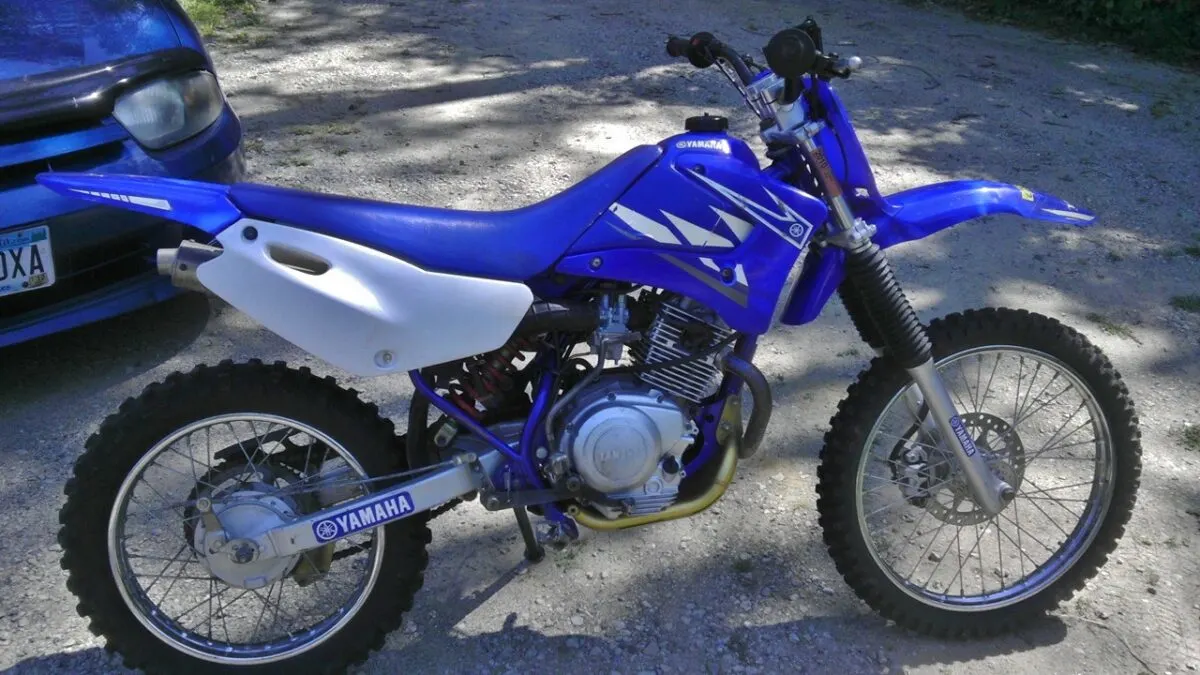
Horsepower vs torque
A stock Yamaha TTR 125 has about 7 horsepower, which may not seem like a lot, but there's more to it than just power. That's only telling you what the peak power is, which is important if you only ride at that RPM, and I'm guessing you're not going to ride at a constant 8000 RPM.
Too many people focus on dyno numbers when the torque curve/power curve is more important when it comes to actual riding, which is where this engine shines. It has a smooth power curve with no sudden spikes or surges - this allows you to get traction and stay in control.
Top speed
The TTR125 with stock gearing has a max top speed of about 45 mph on flat ground, but that doesn't mean much unless you're drag racing. If you're serious about riding off-road, then you're probably not going to be riding that fast on trails - instead, you'll be riding 5-20 mph.
Need a higher top speed? Just change the gearing/sprocket sizes.
Granny Gear Transmission
First gear is so low that it's almost unusable on this bike. This is actually a good thing if you're a new rider. Having a really low/short first gear makes it easy to learn the clutch because you don't have to slip it very much to get going.
Once you're comfortable with using the clutch and don't have issues stalling it when starting out or at low speeds, going one tooth larger on the front sprocket is a nice and easy mod to make the first few gears more spread out and usable.
Electric Start - is it necessary?
Having the 'magic button', that is, electric start, is becoming the norm for dirt bikes. While kick-starting may not be difficult on the TTR125 if the jetting is tuned correctly, just touching a button with your thumb to start the bike is the highlight for a new rider that might get easily frustrated if they constantly have to kickstart the engine.
The standard TTR125 does not have electric start, nor does the TTR125L. Only the TTR125LE model has electric start, hence the 'E' designation on the model name.
Are all TTR 125 engines the same?
They're virtually all the same - the only difference is that the electric start models have an electric start motor system on them. Aside from that, you can interchange parts from all year TTR125's.
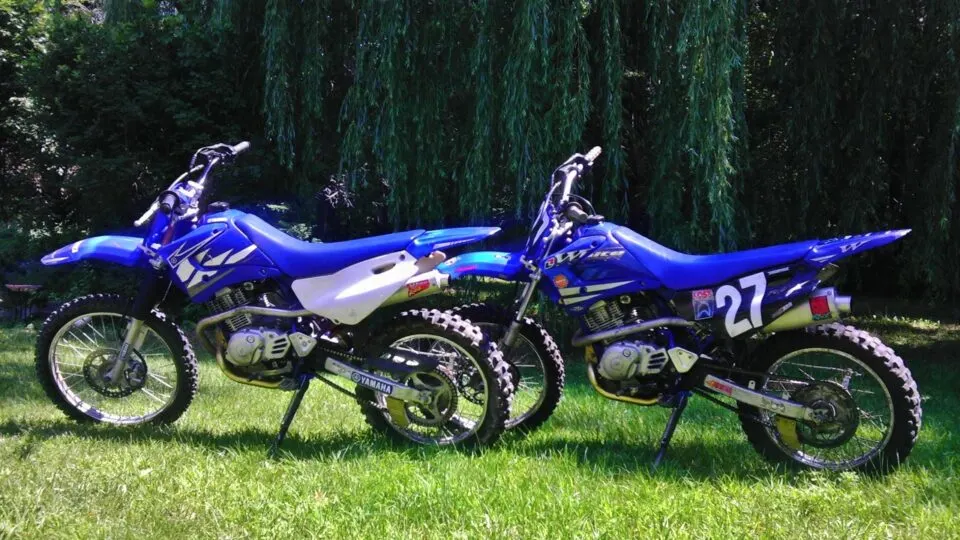
Handling - what's it good at?
The TTR125LE has good handling characteristics because of its low center of gravity and seat height, its short wheelbase and tight turning radius. The Yamaha may not be a standout in it's class for handling, but it doesn't lack anything worth noting.
The suspension and control layout are important to getting the handling as good as it can be for the right rider.
I personally don't care for the stock handlebars and extra long clutch and brake levers, so swapping those out to for some better handlebars (Motosport) get the right ergonomics is one of the first things I do.
TTR125 Suspension
The forks and shocks on a TTR125 are nothing to right home about. In fact, unless you're a beginner rider or weight less than 100lbs, the suspension is less than adequate. We'll cover this more later in this post.
The spring rate and valving is very basic and soft on the TTR125 and 125LE. If you are a new rider that isn't aggressive, it will work just fine and you will enjoy not getting abused from stiff suspension.
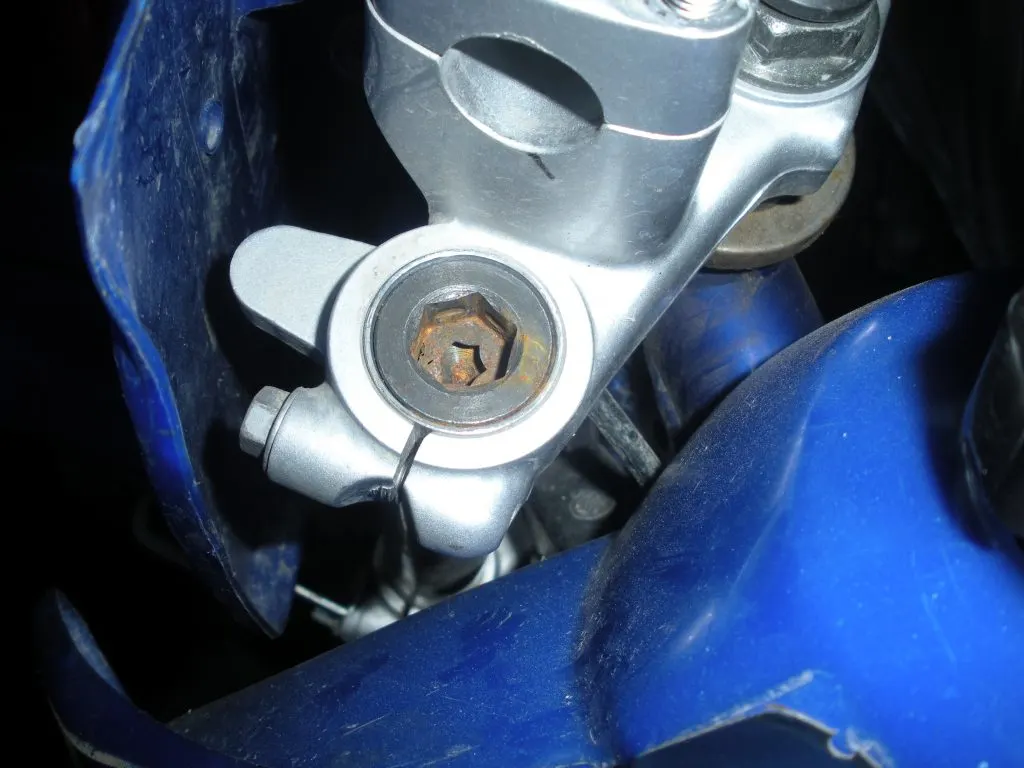
Brakes - comparing the model differences
As you might have noticed, I mentioned that the 125 and 125L/E models have a slightly different brake setup. The standard model has drum brakes front and back. These are adequate for beginner riders if they are dry, properly adjusted and not worn.
The 125L/E models have an upgraded front disc brake that gives a noticeable improvement in braking power. However, if it's not properly adjusted, if the pads are worn or they are dirty with a foreign substance, such as oil, on them, the braking power greatly decreases.
Seat Height/Wheel Size
The size of a dirt bike is one of the biggest factors to choosing the right dirt bike for you. Buy one too big and tall, and you'll get frustrated that you can barely touch the ground when sitting on the bike, resulting in more falls and accidents when learning to ride.
Buy one too small and you'll be cramped and uncomfortable while riding the bike.
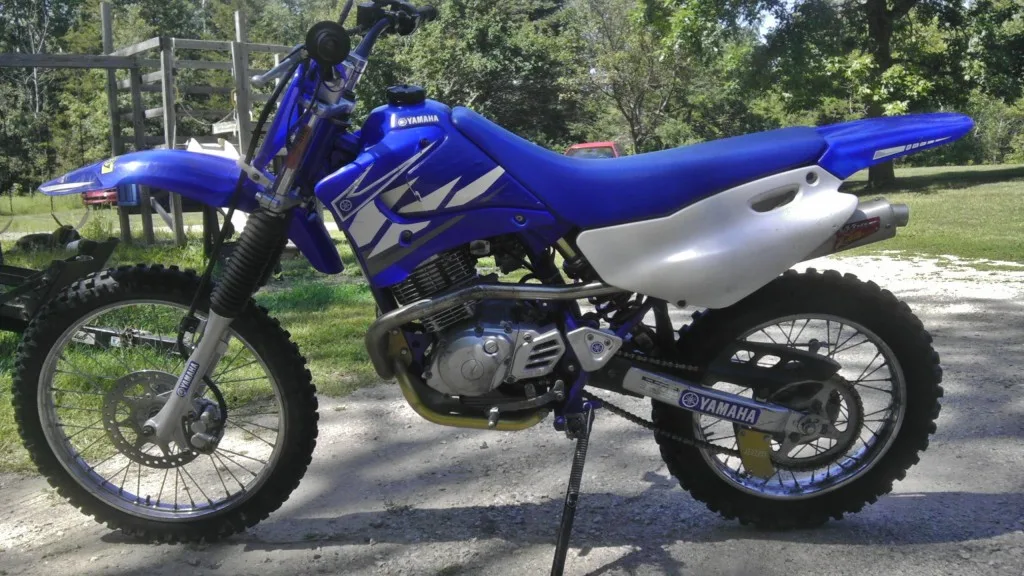
TTR125L vs. TTR125 - What's the difference?
The standard TTR125 small wheel comes with a 17" front wheel and a 14" rear wheel with a seat height of 30.5". The TTR125L/125LE large wheel models have a 19/16" wheel and tire size and have a seat height of 31.7".
Yamaha TTR 125 models - How to tell the differences
The TTR125 has 4 total model options in two different sizes that can fit a variety of riders in height. Yamaha has discontinued 3 of them and only sells the TTR125LE model now.
Below shows the specific differences between each model and how to identify them.
TTR125 (small wheel)
The standard TTR125, while being shorter in height and wheelbase, makes a great transition from smaller semi-automatic dirt bikes for kids.
They get to learn how to use a clutch, but the seat height isn't that much taller than a TTR90 or 110. The standard model comes with drum brakes on the front and rear.
The TTR125 has:
- Small wheels (17/14")
- Kick-start only
- Drum brakes
- 30.5" seat height
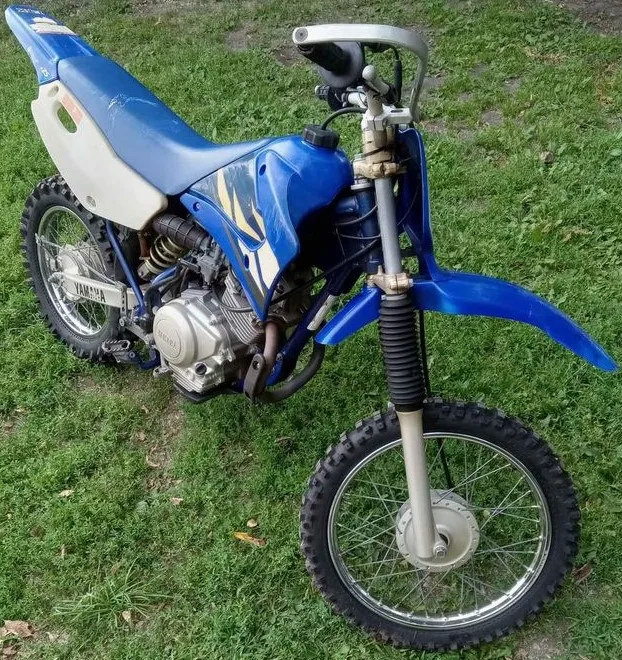
TTR125E (small wheel)
While Yamaha doesn't sell the TTR 125E model anymore, you can still buy a used one. It has the standard smaller wheels and tires, but it comes with electric start in addition to the standard kick-start.
The TTR125E has:
- Small wheels (17/14")
- Electric start and kick-start
- Drum brakes
- 30.5" seat height
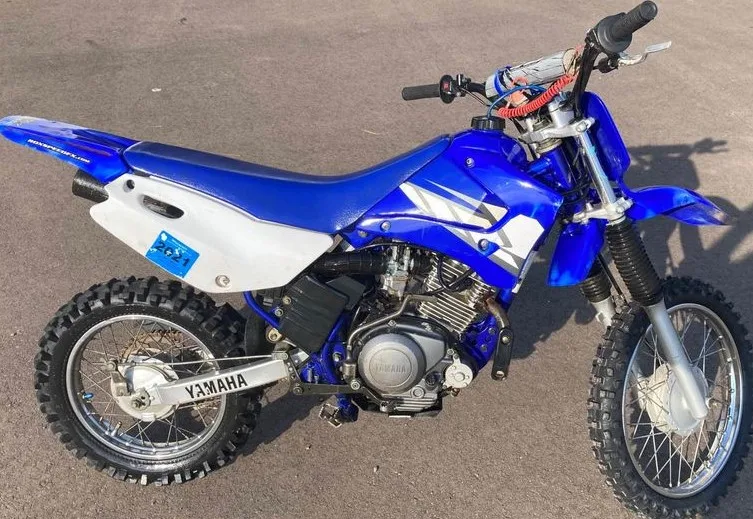
TTR125L (large wheel)
The TTR125L has bigger wheels & tires (19/16 inches), along with an upgraded disc front brake over the standard version. The seat height is a little over an inch higher and it has a slightly longer wheelbase.
All of these changes make it bigger, more stable, and better if you're a little too tall for the small wheel model.
The TTR125L has:
- Large wheels (19/16")
- Kick-start only
- Disc front brake
- 31.7" seat height
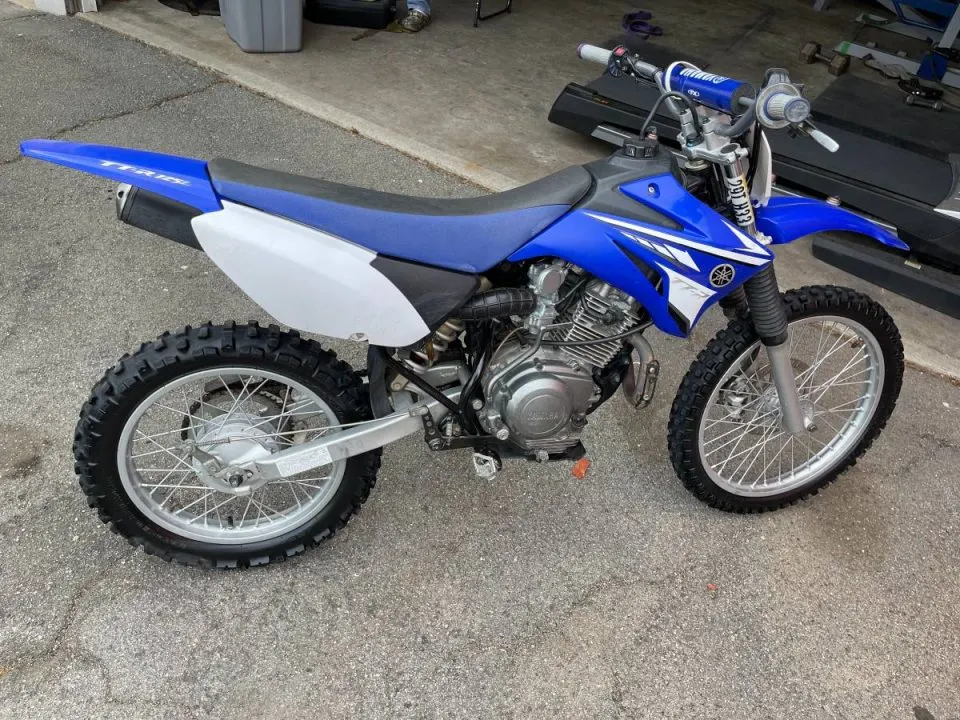
TTR125LE (large wheel)
The TTR125LE is the same as the TTR125L but with and added electric start option - this is really nice if you hate kick-starting or you're training a kid that doesn't have strong legs.
The TTR125LE has:
- Large wheels (19/16")
- Electric start and kick-start
- Disc front brake
- 31.7" seat height
- Adjusting rear shock (remote reservoi)
- Aluminum swingarm

Model Year History/Generation Updates
The TTR125 hasn't changed much from it's original platform, plain and simple. Why? Because it works, it's cheap, and why change something that works well for its intended use.

With that said, there have been some minor changes since its inception. We'll go through the progression of this bike each year that something was updated or changed.
These are the major years of the model history:
- 2000: First year; only 125 and 125L models available
- 2002: Updated rear hub
- 2003: added TTR125E & TTR125LE electric start models
- 2005: Removed the TTR125 small wheel/kick-start only model option
- 2008: Updated plastics/tank
- 2009: Removed the TTR125L kick-start only model option
- 2011: Removed TTR125E small-wheel model option - TTR125LE only available option
Year Identification via the VIN
The 2008 and newer TTR 125 generation looks different than the older years, but how do you confirm the exact year? Find the VIN stamped on the frame steering stem, then use the VIN decoder process.
Simply look at the 10th digit of the VIN. If it's a "4" then it's a 2004, and if it's an "E" then it's a 2014 model year.
Yamaha TTR 125 specs & dimensions
Here's a list of all the basic specs of the TTR125 models:
- Engine: 124cc air-cooled 4-stroke
- Transmission: 5-speed
- Clutch: Wet clutch, Manual
- Fuel system: 20mm Mikuni carburetor
- Seat Height: 30.5" (125 small-wheel)/31.7" (125L/LE large-wheel)
- Weight: 172 (dry)
- Wheelbase: 50"
- Front wheel: 17" (125)/19" (125L/LE)
- Rear wheel: 14" (125)/16" (125L/LE)
- Suspension Travel (Front/Rear): 7.⅙.6" (125LE)
- Ground Clearance: 10.4" (125)/11.6" (125L/LE)
- Fuel Tank Capacity: 1.74 gallons (6.58 liters)
- Top Speed: ~ 45-50mph
- Horsepower: 7 HP
- New Price - $3,399 MSRP
Common problems for the TTR 125?
There's both good news and bad news, and the good news is that there weren't any major issues with this Yamaha TTR. The bad news is that because it's so reliable, many owners took advantage of that and never did any maintenance.
This leads to a lot of rundown and worn out used bikes on the market. So, whether you're looking to buy a used one or just need help with a common issue, I'm here to help.
These are the most common TTR 125 problems:
- Won't start
- Won't stay running
- Battery/starter
- Engine knocking
- Clutch/transmission/shifting
- Leaking gas
- Oil leak
- Low compression
Most of them are simply due to lack of maintenance or from a crash that bent or broke something on the bike.
Maintenance - how much work does it take?
Any gas vehicle requires at least some maintenance to keep it running, but the TTR 125 is on the low end of the scale. Compared to a race bike, you can get many years by just doing a simple maintenance routine.
This involves checking the oil and changing it when it gets dirty or low, which could be anywhere from 5-20 hours of riding. Cleaning or replacing the air filter is also extremely important if you want to prevent a major engine problem.
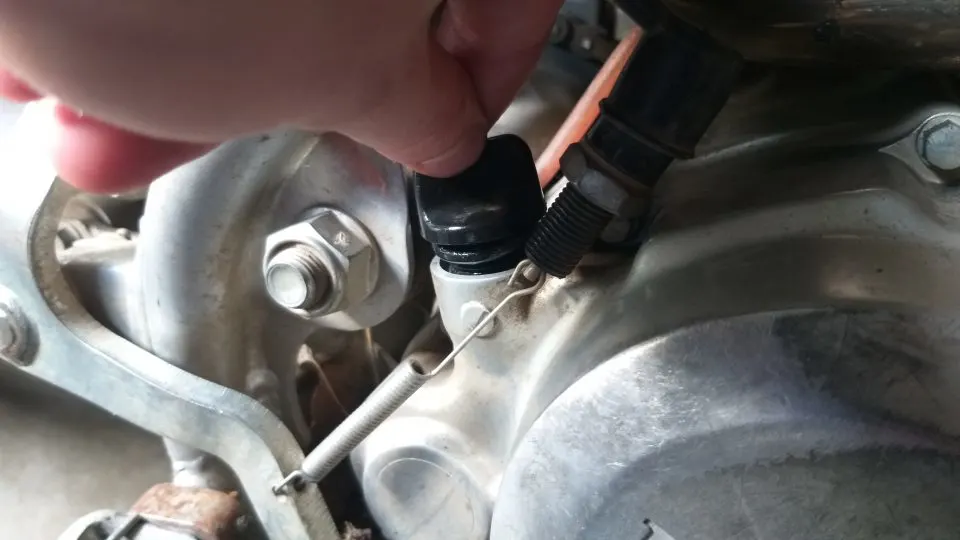
When you let the oil get dirty and/or low, the engine parts will get hotter and not stay lubricated as well. This causes more friction and wear, which will wear them out much faster.
In addition, if you don't keep the air filter clean, dirt will by getting sucked into the engine and wear the metal parts out much faster. It will often result in the engine smoking.
New vs used price - how much is a TTR 125 worth?
While a brand new TTR125LE is $3,349 retail price, a used one can be had for considerably less. This is why it's on my list of best cheap used dirt bikes.
A commonly used price for a TTR 125 is around $1000-2000. Its value mainly depends on your location (supply/demand), the condition it's in, and what year it is.
TTR125 vs KLX140
While the KLX140 has slightly more power, the TTR125 is usually cheaper to buy used. The TTR125E & 125LE models have electric start to match the KLX.
There's also more parts and mods available for the Yamaha. If you're on a budget and want to have cheap used parts available, go with the TTR 125. If money and availability is not a problem, then I'd pick the KLX 140.
TTR125 vs XR100
The TTR125 has more power than the XR100, but they both have a lot of potential with plenty of mods available. The XR100 ergonomics are slightly better on the 2001 and newer models, but none of them have electric start.
TTR125 vs CRF150F
The CRF150F has a noticeably more power, but it's also a little bigger and heavier than the TTR125. The Yamaha can usually be found a little bit cheaper. It comes down to how big you are, which bike you find a better deal on, and what color you prefer to ride.
TTR125 vs YZ85
Even though they're similar in size, the TTR125 is a 4 stroke trail bike with about 7HP and the YZ85 is a 2 stroke MX bike with about 21 HP, so they're very different types of dirt bikes.
TTR125 Jetting problems and proper tuning
Getting the TTR125 to run well is not too difficult, but the stock carburetor is one of its weak points due to its jetting and small pilot jet size. Depending on your climate, it may come a little lean from the factory and you may have to go richer/bigger a size or two on the pilot and main jets.
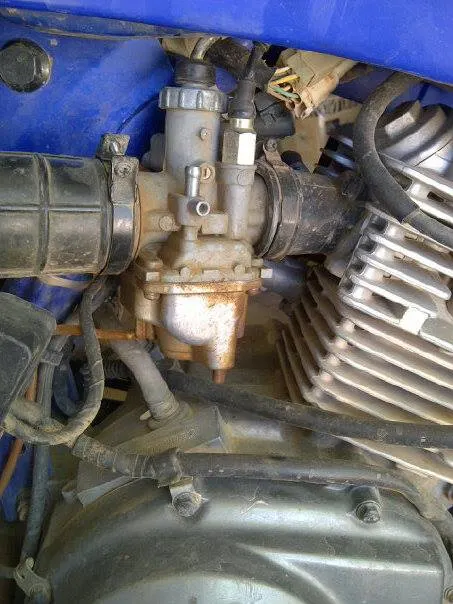
Stock jetting is: 15 pilot jet, 100 main jet.
Going up to a 17.5 pilot and 110 main jet can make a huge difference in how easily it starts and runs - especially if you've uncorked the intake and/or exhaust baffle.
A lean running TTR125 will cause headaches.
Here are a few symptoms of a lean condition:
- Hard starts when cold
- Bogging when big throttle transitions
- Popping on deceleration
- Engine runs hotter; causes more wear
Carburetor upgrade?
Many people, including myself, have upgraded the stock TTR 125 carb for a Mikuni VM 24 carb. It's the same carb found on 65cc 2 stroke dirt bikes, but once properly jetted it starts and runs better overall.
How to make a TTR125 taller
There are many things you can do to make your dirt bike taller, but most of them cost money. The best free ways to make your TTR 125 taller are:
- Increasing shock pre-load
- Raising forks in the clamps
- Taller seat
TTR125 Mods
These bikes are fun for both kids as well as adults because they're smaller, easy to ride, and are lightweight and nimble compared to a full-size dirt bike. If you're an adult and already own one, then you know how much fun it is to rip around on it.
But let's face it, the TTR is lacking performance in almost every category, from suspension to power output. Even a simple carb swap makes a difference in power with proper jetting. There are plenty of aftermarket parts available, but which ones actually help the most?
The best cheap and free mods for a TTR125 include, uncorking, jetting, and suspension upgrading.
How To Choose The RIGHT Bike For You
Still not sure if the TTR125 is the best dirt bike for your specific needs? The biggest mistake people make when getting into dirt bike (especially street bike riders) is starting on the WRONG bike, whether it's too big, too powerful, too tall, too heavy, or just the wrong bike altogether
I want to help you AVOID making this mistake, which is why I offer a 1-on-1 consulting call to help you choose, find, and buy the right bike based on YOUR specific needs and budget.


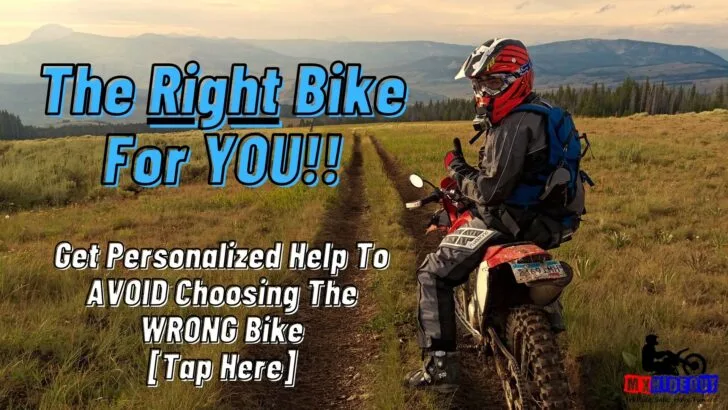
Shawn
Wednesday 13th of March 2024
I can’t tell if my tenth digit on the vin is a x or a k? And also can i purchase the small wheels for it
Perry
Tuesday 27th of June 2023
One difference you missed when comparing the different TTR125 models is the rear shock; some have a shock with a separate reservoir which is somewhat rebuildable with the help of aftermarket parts from Racetech, etc, and other models have internal reservoir shocks which to my knowledge/research are not rebuildable. I'm not sure who makes the shocks either (KYB?, Showa?, Yamaha?) as there were no trade or PN markings found on any of the shock parts. Shock internal parts are not sourced individually by Yamaha so you would have to purchase the entire unit if leaking, etc. So you may want to look for that when purchasing a used bike.
Kelley Fager
Friday 30th of June 2023
Hey Perry, you're right - I did forget to mention that the "E" models have the adjustable rear shock. I actually added one to my 2000 125L because it performs a little better with an adult rider. Thanks for reading!
Don
Monday 15th of May 2023
This is awesome! Thank you so much for this review. I just picked up a 2006 ttr125 and it needs new plastics/seat/tank. Do you know if I can purchase the newer model years parts and bolt them up to the frame without too much additional fabrication? Thanks!
Kelley Fager
Tuesday 16th of May 2023
You're welcome, Don - congrats on the new bike! To be honest, I don't know for sure if the newer plastics/seat/tank will fit. You'll have to do a little bit of research to figure that out.
Chris
Thursday 27th of April 2023
Your articles are pretty great for regular people.
Kelley Fager
Friday 28th of April 2023
Thanks for your kind words, Chris!
Chris
Friday 14th of April 2023
Good basic info on the ttr 125. Thanks.
Kelley Fager
Monday 17th of April 2023
You're welcome, Chris. Thanks for reading!